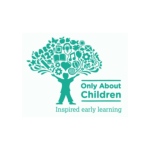

As the mother of a toddler, I want to make sure I’m doing everything I can to prepare him for kinder, school and, well, life! So, I try to factor in veg with every meal, lots of trips to the park, music classes and craft (OK, the craft is a stretch – he has playdough) because I know how important these early years are for development.
As parents, we also want to feel confident that if we’re using early childhood education, our little ones are in good hands.
I’d heard the term ‘holistic learning’ used a lot when describing early childhood services but, honestly, I didn’t know what that meant, or why it mattered. So I asked Emma Forbes, Head of Education and Curriculum at Only About Children (Oac), to shed a light on the philosophy of holistic learning for me and what it looks like in practice at Oac Early Learning and Preschools in Sydney and Melbourne.
“Holistic education is a philosophy that focuses on preparing children for lifelong learning through delivering a curriculum that helps develop each child’s skills individually,” Emma tells Mamamia. “The foundational skills of all learning include building and maintaining positive relationships, social and emotional development, resilience and learning to be a collaborative member of a community.”
When a high-quality curriculum is delivered considering all of these elements, it not only prepares children for further education but for life, according to Emma.
This all sounds pretty good to me – but there’s a lot more to it, as I found out.
